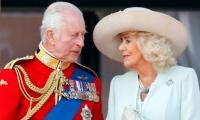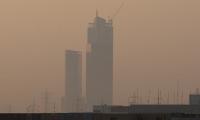ISLAMABAD: Annual consumer inflation edged down to 10.2 percent in March from 12.4 percent in February, official data showed on Wednesday, as dwindling oil prices and unchanged energy tariffs kept the trend downward last month.
Pakistan Bureau of Statistics (PBS) said consumer price index (CPI) inflation was recorded at 8.6 percent in March 2019. On month-on-month basis, it increased 0.04 percent in March as compared to a decrease of 1 percent in February and an increase of 2 percent in March last year.
Analyst Noman Ahmed at Insight Securities attributed easing inflation to higher base-effect, dwindling oil prices, deferred fuel adjustment in power tariffs and unchanged education index as academic calendar was changed due to closure of schools and universities across the country amid COVID-19 outbreak.
“We expect CPI to shrink to a single digit in April as major impact of recently announced reduction in fuel prices would come into effect along with a higher base-effect,” Ahmed said. “We expect average CPI for FY2020 to remain at 11.03 percent. However, abrupt rise in food prices on account of lockdown situation along with a seasonal uptick in food prices due to Ramazan factor cannot be ruled out.”
The annual inflation is within the central bank’s annual range of 11 to 12 percent. In July-March 2019/20, average consumer inflation stayed at 11.53 percent. That would be qualified as a reason for recent soft monetary stance. However, the coronavirus shock to the global economy proved a bad omen to the Pakistan’s already fragile economy. The State Bank of Pakistan came in to rescue the flagging growth and announced back-to-back cuts in interest rate in a week to bring it down to 11 percent.
“MPC (monetary policy committee) has eased the policy rate to 11 percent earlier this month, addressing this crisis situation quite well keeping in view of projected decline in inflation,” Ahmed said. “We expect CPI remain at 9.5 percent till June 20 and we do not expect further emergency cut as real inflation is currently hovering 0.85 percent. But conditions can get worse if current economic halts prolonged, which may lead to stagflation.”
PBS data further showed that CPI inflation urban increased by 9.3 percent on year-on-year basis in March 2020 as compared to an increase of 11.2 percent in the previous month and 8.9 percent in March 2019. On month-on-month basis, it increased by 0.1 percent in March 2020 as compared to a decrease of 1.1 percent in the previous month and an increase of 1.9 percent in March 2019.
CPI inflation rural increased by 11.7 percent on year-on-year basis in March 2020 as compared to an increase of 14.2 percent in the previous month and 8.2 percent in March 2019. On month-on-month basis, it decreased by 0.1 percent in March 2020 as compared to a decrease of 1.0 percent in the previous month and an increase of 2.2 percent in March 2019.
Wholesale price index (WPI) inflation on year-on-year basis increased by 9.2 percent in March 2020 as compared to an increase of 12.6 percent a month earlier and an increase of 16.6 percent in March 2019.
WPI inflation on month-on-month basis decreased by 0.9 percent in March 2020 as compared to a decrease of 0.8 percent a month earlier and an increase of 2.2 percent in the corresponding month of last year (March 2019).
The CPI on new base (2015/16) comprises of urban and rural CPI. The urban CPI covers 35 cities and 356 consumer items. The rural CPI covers 27 rural centers and 244 consumer items. In the new base year , national CPI for 12 major groups is also computed by taking weighted average of urban CPI and rural CPI. Previously, the base year for calculating inflation was 2007/08.
A representational image of a BankIslami branch. — AFP/FileKARACHI: BankIslami has introduced Pakistan’s...
Pepsi officials holding pepsi bottles for a photo. — Pepsi co pk website/FileLAHORE: PepsiCo Pakistan is...
This undated file photo shows processed gold bars. — AFP/FileKARACHI: Gold prices in the local market soared by...
US dollar and Euro banknotes are seen in this illustration taken March 19, 2025. — ReutersLONDON: Investors are...
International Monetary Fund logo is seen inside the headquarters at the end of the IMF/World Bank annual meetings in...
A red light is pictured at a pedestrian crossing in front of the World Trade Organization headquarters in Geneva,...







